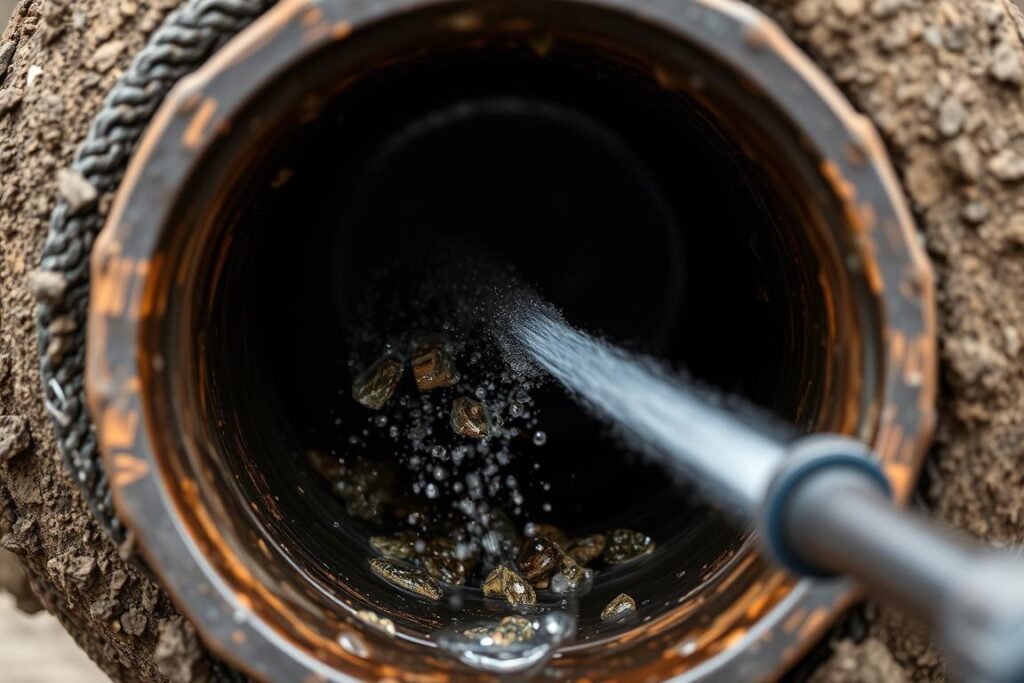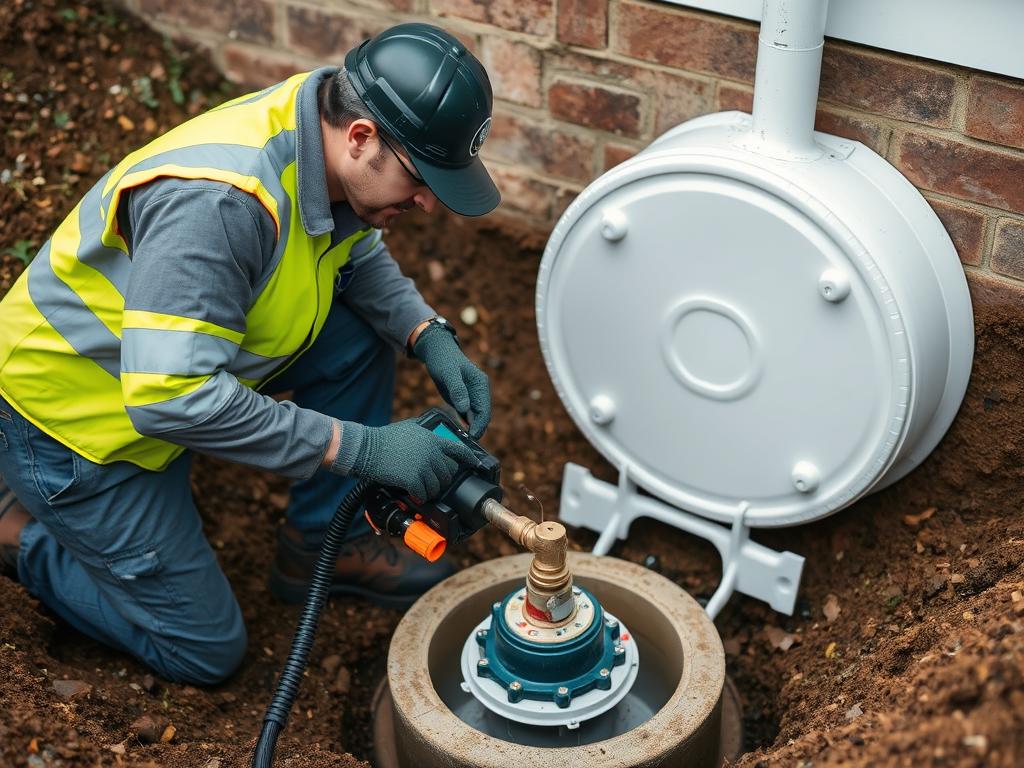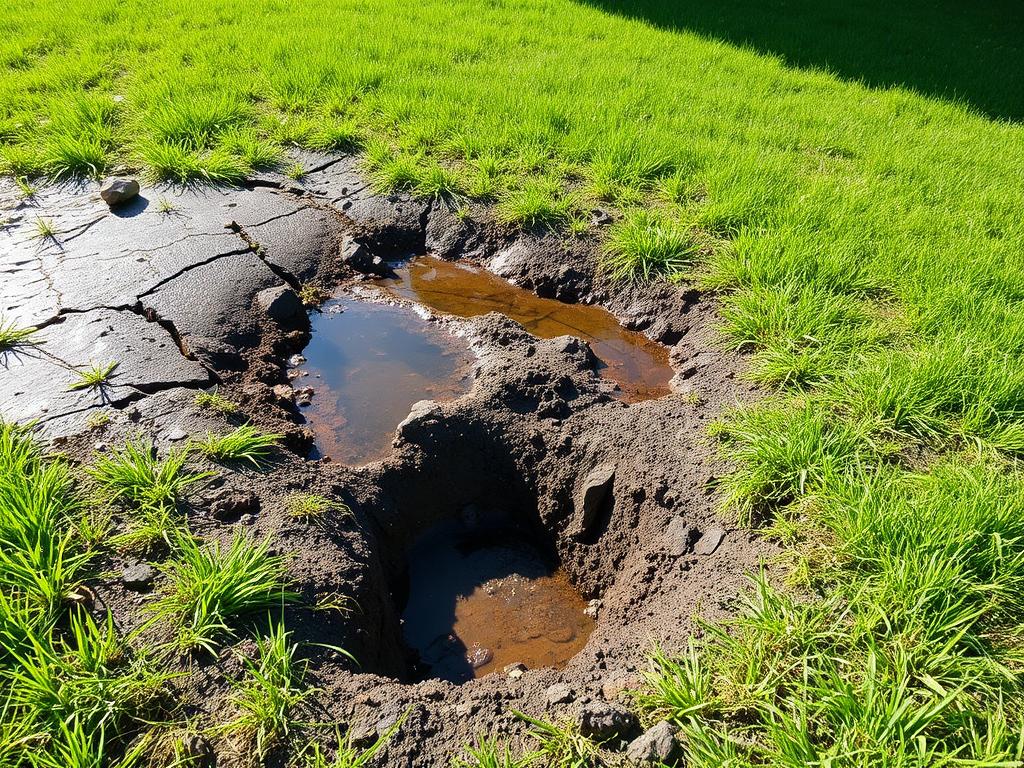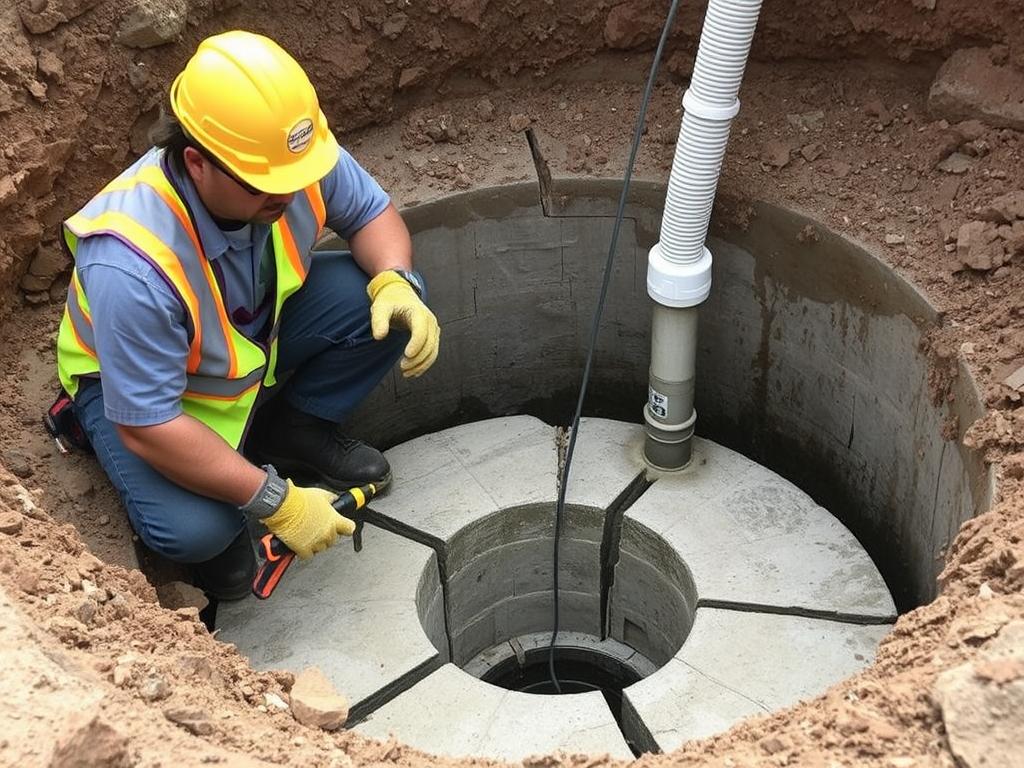Common Septic Tank Issues That Can Be Repaired
Many septic problems can be successfully repaired without requiring a complete system replacement. Knowing which issues typically respond well to repairs can help you make informed decisions when problems arise.
Cracks and Leaks in Tanks
Concrete septic tanks can develop cracks over time due to soil pressure, freeze-thaw cycles, or age. Small to medium cracks can often be sealed using specialized epoxy compounds or hydraulic cement. For fiberglass or plastic tanks, professional patching techniques can effectively repair punctures or fractures.
Clogged Pipes and Drain Fields
Blockages in inlet or outlet pipes are among the most common septic tank repair needs. Professional hydro-jetting can clear stubborn clogs without damaging pipes. For drain fields with minor soil compaction issues, aeration or pressure washing may restore proper function without replacement.

Broken Baffles
Baffles prevent solids from entering the drain field and are crucial for system function. When damaged, they can be replaced without replacing the entire tank. This repair typically costs between $300-$900 and significantly extends system life.
Root Intrusion
Tree and shrub roots naturally seek water sources and can infiltrate septic components. Professional root removal services can extract invasive roots and apply growth inhibitors to prevent recurrence. Damaged pipes from root intrusion can often be repaired using trenchless technologies.
Surface-Level Structural Damage
Damage to tank lids, risers, or access ports can be repaired or replaced individually. Installing new risers improves access for future maintenance and inspections while extending the life of your system.
Repair vs. Replacement: Making the Right Decision
Several key factors determine whether repair or replacement is your best option. Understanding these considerations will help you make an informed, cost-effective decision.

Age of Your Septic System
The average lifespan of a septic system is 20-40 years, depending on materials and maintenance. Concrete tanks typically last 30-40 years, while steel tanks may last only 15-20 years before corroding. If your system is approaching these age milestones, replacement might be more economical than repeated repairs.
Extent of Damage
Localized damage to specific components generally favors repair, while systemic issues affecting multiple parts of your septic system often make replacement more cost-effective. Professional inspection can determine if damage is isolated or widespread.
When Repair Makes Sense
- System is less than 15 years old
- Problem is isolated to one component
- No history of recurring issues
- Drain field is functioning properly
- Tank structure is fundamentally sound
When Replacement Is Better
- System is over 25 years old
- Multiple components are failing
- Recurring problems despite repairs
- Drain field is failing or saturated
- Tank has severe structural damage
Soil Condition and Drain Field Health
The condition of your drain field is crucial in the repair-or-replace decision. A failing drain field often necessitates system replacement, as repair options are limited once soil becomes saturated with biomat (organic material that prevents proper drainage).
Local Regulations
Many municipalities have updated septic system codes since older systems were installed. Significant repairs might trigger requirements to bring the entire system up to current code, potentially making replacement more practical than extensive modifications to an outdated system.
Septic Tank Repair Costs vs. Replacement
Understanding the financial implications of septic system work helps you budget appropriately and evaluate quotes from service providers.

Average Repair Costs
Septic tank repairs typically range from $500 to $4,000 depending on the issue, with most homeowners spending around $1,500 for common repairs. Here’s a breakdown of typical repair costs:
| Repair Type | Average Cost Range | Factors Affecting Cost |
| Baffle replacement | $300-$900 | Tank accessibility, material |
| Pipe repair/replacement | $500-$1,800 | Length of pipe, depth, accessibility |
| Tank crack repair | $800-$2,000 | Size of crack, tank material, location |
| Pump replacement | $800-$1,400 | Pump type, horsepower, brand |
| Distribution box repair | $500-$1,500 | Box type, accessibility, soil conditions |
Replacement Costs
Complete septic system replacement typically costs between $5,000 and $20,000+, with factors like system size, tank material, site accessibility, and local permitting requirements affecting the final price. Homes with larger capacity needs or challenging installation sites may see costs exceeding $25,000.
Cost-Saving Tips
Early detection of septic issues can dramatically reduce repair costs. Regular inspections (every 3-5 years) and pumping (every 3-5 years depending on household size) help identify problems before they become severe. While some maintenance tasks can be DIY, most repairs require professional expertise to ensure safety and compliance with regulations.

Pro Tip: Many septic service companies offer maintenance plans that include regular inspections and pumping at discounted rates. These plans can save money while ensuring your system receives proper care.
Warning Signs Your Septic Tank Needs Repair
Recognizing the early warning signs of septic problems can help you address issues before they become costly emergencies. Be alert for these indicators that your system may need professional attention.
Slow Drains Throughout Your Home
When multiple drains in your home are slow to empty, especially if the problem affects toilets, showers, and sinks simultaneously, your septic system may be backing up. This often indicates that waste isn’t properly flowing from your home to the septic tank or from the tank to the drain field.
Foul Odors Inside or Outside
Sewage odors around your property or inside your home suggest that gases are escaping from a damaged tank, failed seal, or clogged vent. These odors aren’t just unpleasant—they can indicate potentially harmful conditions that require immediate attention.
Pooling Water or Soggy Areas
Unexplained wet areas or standing water near your septic tank or drain field, especially during dry weather, often indicate a leak or system failure. This wastewater can pose health risks and should be addressed promptly by a professional.

Unusually Green or Lush Grass
While it might seem positive, patches of especially green or fast-growing grass over your septic tank or drain field often indicate that effluent (liquid waste) is leaking and fertilizing the area. This suggests a breach in your system that requires professional evaluation.
Gurgling Sounds in Plumbing
Unusual gurgling noises from drains, toilets, or pipes can indicate that air is trapped in your plumbing due to blockages in your septic system. These sounds often precede more serious backup issues and warrant professional inspection.
Warning: If you notice multiple warning signs simultaneously, especially backups or standing wastewater, contact a septic professional immediately. These conditions can create health hazards and may indicate a serious system failure requiring urgent attention.
When to Call a Professional for Septic Tank Repair
While regular maintenance like inspections can sometimes be handled by knowledgeable homeowners, most septic repairs require professional expertise. Here’s when to call in the experts.
Scenarios Requiring Professional Expertise
Always contact a licensed septic professional when you encounter:
- Sewage backups into your home or yard, which present immediate health hazards
- Standing water or soggy areas over your septic tank or drain field
- Multiple slow drains throughout your home that persist after basic plunging
- Alarm activation on systems with pumps or advanced treatment components
- Unusual settling of ground around your tank or distribution box
- Foul odors that persist despite normal household cleaning
Red Flags for Replacement
Some situations suggest that replacement may be more appropriate than repair. Consider system replacement when:
- Your system is over 25-30 years old and experiencing multiple issues
- Repair costs would exceed 50% of replacement cost
- Your drain field has failed and shows signs of soil saturation
- You’ve needed multiple major repairs within a short timeframe
- Your home’s wastewater needs have increased significantly (additions, more residents)
- Local regulations require upgrading to current standards during major repairs
Maintaining Your Septic System: Prevention Is Better Than Repair
The most cost-effective approach to septic tank issues is preventing them in the first place. Regular maintenance not only extends your system’s lifespan but also helps you avoid expensive emergency repairs.
Essential Maintenance Tips
- Schedule regular pumping every 3-5 years depending on household size and usage
- Conserve water to prevent system overload by fixing leaks and spreading out laundry loads
- Protect your drain field by avoiding parking, building, or planting trees over it
- Be mindful of what goes down drains – avoid flushing non-biodegradable items, grease, or chemicals
- Keep records of all maintenance, pumping, and repairs for future reference
By understanding when septic tank repair is possible and when replacement is necessary, you can make informed decisions that protect both your property and your finances. Remember that professional inspection is the most reliable way to assess your system’s condition and determine the most appropriate solution for any issues you encounter.

